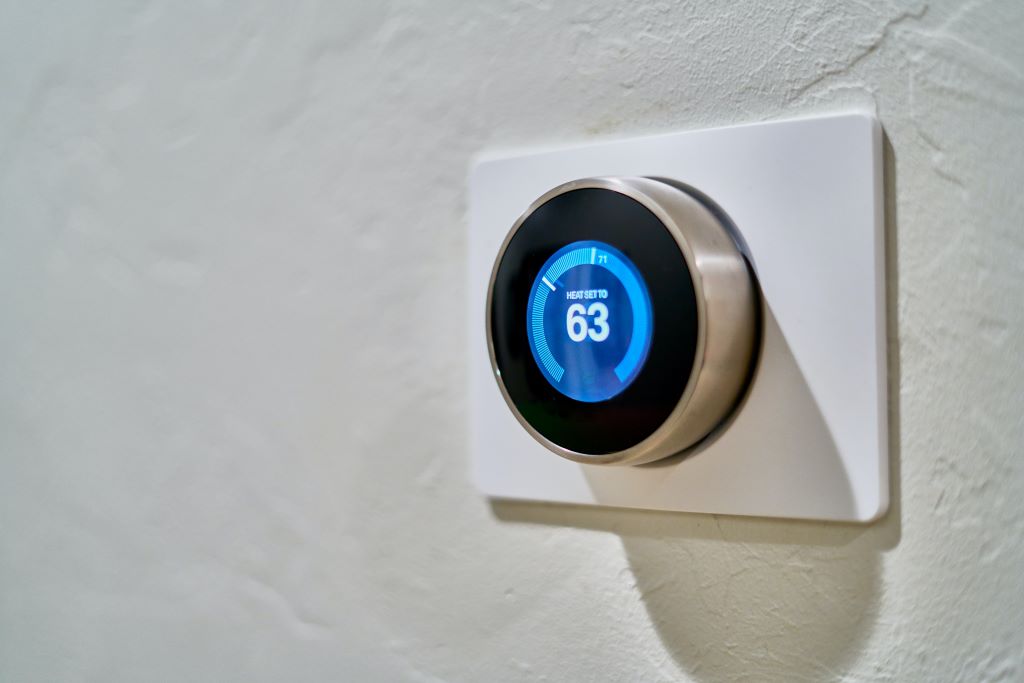January 10th is National Cut Your Energy Costs Day, a day that is vital to helping people all around the US cut down on energy costs to save money and help the planet. As the world faces the effects of climate change and escalating energy prices, adopting energy-efficient practices has become more important than ever. Not only does reducing energy consumption benefit the environment by lowering greenhouse gas emissions, but it also returns significant financial savings for both homeowners and businesses. In this blog, we’ll answer some popular questions about energy conservation, and we’ll share 10 effective tips to cut energy costs, highlighting the multiple advantages that come with conserving energy.

How Does Saving Energy Help the Planet?
By reducing the energy use in your home, you can reduce the demand for power, which can turn into harmful emissions such as carbon dioxide. You’ll often hear the phrase “reducing your carbon footprint” when referring to saving energy in your home. This is because you’re offsetting the amount of greenhouse gas emissions.
When we produce large amounts of greenhouse gas, the Earth’s atmosphere can’t absorb it. This results in erratic temperatures, climate change, and air pollution—harming the planet and our health.
Benefits of Energy Conservation
Conserving energy may not only positively impact your finances but could also offer several environmental advantages. By reducing energy consumption, we can:
- Combat Climate Change:* Lowering energy usage results in reduced greenhouse gas emissions, which are a leading cause of climate change. By cutting our carbon footprint, we actively contribute to lessening global warming and its devastating consequences.
- Preserve Natural Resources:* Energy production relies heavily on limited resources like fossil fuels. Conserving energy means using fewer of these non-renewable resources, thereby preserving them for future generations.
- Enhance Energy Security:* Reducing energy demand can lead to reduced dependence on imported energy sources. A focus on renewable energy further supports national energy security by diversifying the energy mix and promoting domestic energy production.
- Boost Economic Growth:* Energy efficiency initiatives create job opportunities in various sectors, from manufacturing and construction to research and development. This stimulates economic growth and promotes innovation.
- Improve Air Quality:* Lower energy consumption means reduced emissions from power plants and vehicles, leading to improved air quality and better public health outcomes by reducing respiratory and cardiovascular diseases.
Does Unplugging Electronics Save Energy?
Yes, unplugging electronics and devices when not in use can save energy. Many devices continue to draw power even when turned off, known as “phantom” or “standby” power consumption. Unplugging them eliminates this unnecessary energy usage.
Is Solar Power Cost-Effective for Homeowners?
Solar power may be cost-effective for homeowners, depending on factors such as location, available incentives, energy consumption, and the cost of traditional electricity. Over time, solar panels may lead to significant savings on energy bills and may increase the value of the property.
Now, for what you’ve been waiting for… Let’s jump into the best tips to cut energy costs.

10 Tips to Save on Energy Costs
Adopting energy-efficient practices is not only a responsible choice for the environment but may also be a smart financial decision. By following these tips to cut energy costs, you could save significantly each month.
1. Take Shorter Showers
So simple and yet so effective, cutting your shower short by just three minutes can help you save, on average, 5 gallons of water.*
2. Check Seals on Windows, Doors, and Appliances
Make sure your fridge and freezer are well sealed.* The same goes for doors and windows. A lousy seal can allow energy to seep out, draining your finances.

3. Adjust Your Thermostat
Set your thermostat back 10 to 15 degrees when you’re asleep or away from home. Doing so for eight hours could lower your annual heating and cooling costs by around 10%. Consider upgrading to a programmable thermostat to help you with this automatically.*
How to Program a Smart Thermostat for Energy Savings
To program a smart thermostat for energy savings:
- Set energy-efficient temperature ranges for different times of the day.
- Adjust temperature settings based on your daily routines.
- Use “away” or “vacation” mode when you’re not at home.
- Take advantage of remote-control features to manage your thermostat when away.
4. Fix Your Leaky Faucets and Replace Your Shower Head
Not only is a leaking faucet annoying, but it’s also wasting gallons of water. If you’re handy with a wrench or want to hire a plumber, fixing those leaky faucets can help you save water. While you’re fixing your faucets, consider replacing your showerhead. An efficient showerhead can reduce your water usage by 2,700 gallons per year.*
5. Wash Clothes in Cold Water
Stick to cold water when you do laundry. By doing so, you could cut your per-load energy usage by at least half. In addition, you can now buy laundry detergent specifically for cold water washes.*
6. Adjust Your Water Heater
The default temperature setting on water heaters is typically 140° F but lowering it to 120° F can reduce your water heating costs. Are you leaving town for a few days? Turn your water heater to the lowest setting to conserve energy usage.

7. Purchase Energy-Saving Appliances and Devices
Energy-saving appliances and devices are designed to consume less energy while maintaining performance. Examples include ENERGY STAR-rated appliances (e.g., refrigerators, washing machines), LED bulbs, smart thermostats, and energy-efficient HVAC systems.*
Buying an energy-efficient model can yield long-term savings.* For example, a dishwasher with the Energy Star label requires 3.5 gallons of water or less per cycle, compared with the more than 10 gallons used by some older models. Prioritize the appliances you use the most often, such as your washer, dryer, and refrigerator.
8. Swap Out Your Lightbulbs with Energy-Efficient Lighting Options
Energy-efficient lighting options include LED bulbs and CFLs (compact fluorescent lamps). These bulbs use significantly less energy and have longer lifespans compared to traditional incandescent bulbs.
You could save up to $75 per year by swapping your bulbs with compact fluorescent or LED bulbs that bear the Energy Star label.*
9. Use Smart Power Strips
Some electronic devices never truly power off. These are usually, but not exclusively, items with a remote control. This is because the remote sensor constantly needs power while waiting for your input. So instead, plug these electronics into a smart power strip, which cuts off the current when the devices aren’t in use.*
10. Do an Energy Audit
Utility providers will often conduct a home energy audit, sometimes for free.* Energy audits can identify additional ways to reduce your energy usage. If you want to conduct an energy audit at home, try the following strategies:
- Identify areas of energy consumption (heating, cooling, lighting, etc.).
- Check for air leaks and insulation issues.
- Assess the efficiency of appliances and electronics.
- Review energy bills and usage patterns.
- Seek professional assistance or use online tools to conduct a comprehensive audit.

Follow These Tips to Cut Energy Costs
Energy-efficient systems/products typically last longer than older, less efficient systems. In addition, less frequent maintenance, parts, and replacements can help cut back on unrecyclable waste.
We still need to use energy in our homes every day. However, you’ll find that you use more than is necessary. Although it may seem daunting to cut your consumption, even minor changes can significantly impact you and the planet.
For more resources on how you can reduce your carbon footprint and ways to save energy, check out the Environmental Protection Agency’s official website.*
High-interest loans can be expensive and should be used only for short-term financial needs, not long-term solutions. Customers with credit difficulties should seek credit counseling. The opinions expressed above are solely the author’s views and may or may not reflect the opinions and beliefs of the website or its affiliates. Cash Factory USA does not provide financial advice.
* This blog contains links to other third-party websites that are not endorsed by, directly affiliated with, or sponsored by Cash Factory USA. Such links are only for the convenience of the reader, user, or browser.